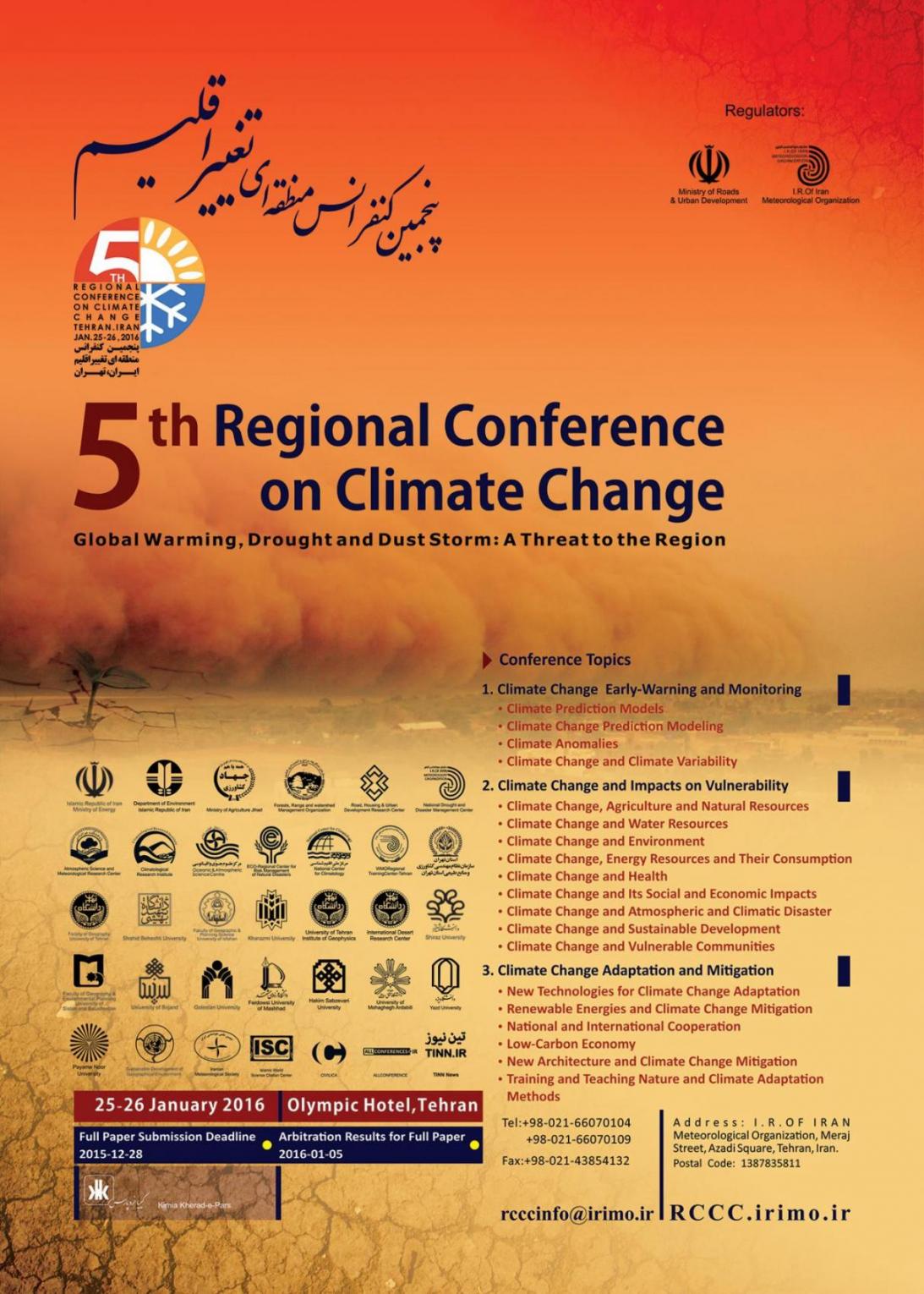The 5th Regional Conference on Climate Change opened Monday in Tehran with foreign experts on meteorology and environment in attendance.
Senior members of the World Meteorological Organization are also expected to attend, IRNA reported.
The two-day meeting focuses on global warming, drought and dust storms and their impact on the Middle East – one of the world’s most water-stressed regions. Climatologists say that the planet’s warming has further exacerbated the strategic region’s struggle with water deficit and drought.
According to Sahar Tajbakhsh, the event manager, 250 research papers will be presented at the conference.
“Forty-two papers will be presented orally and the rest will be in the form of infographics,” she said.
Iran has pledged to cut greenhouse gas emissions by a maximum of 12% by 2030, subject to international assistance. Iran emits around 800 million tons of carbon dioxide every year, making it one of the world’s top 10 emitters of greenhouse gases.
Official estimates say $17.5 billion in investment is needed to ensure Iran meets its unconditional pledge, i.e. without international aid, of 4% reduction in emissions by 2030.
To meet its conditional pledge of 12% reduction, Tehran would need an additional $30 billion.
The Rouhani government’s climate roadmap explicitly states the critical need for major changes to energy policy, which is responsible for over 90% of Iran’s greenhouse gas emissions. However, policy reform also demands efficient management plus modern technology, to which Iran should now has access thanks to the lifting of international sanctions.
There have been disturbing reports in the local media over the years about the unacceptably high consumption of energy in Iran with several implying that Iranians every year consume the sum total of several industrial nations together.
In December, 196 countries reached a historic deal in Paris to limit greenhouse gases in line with scientific advice, to avoid temperature rises of more than 2 degrees Celsius, and to review their commitments and progress on meeting them every five years. This framework is legally binding, and most countries - including all the biggest emitters - also set out national targets for emissions, to 2025 or 2030.


